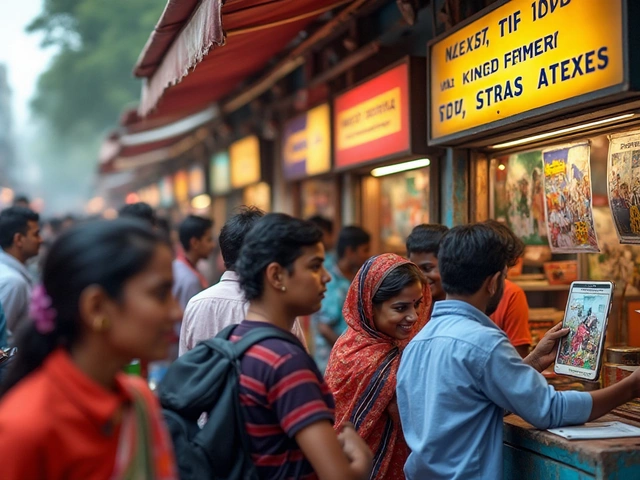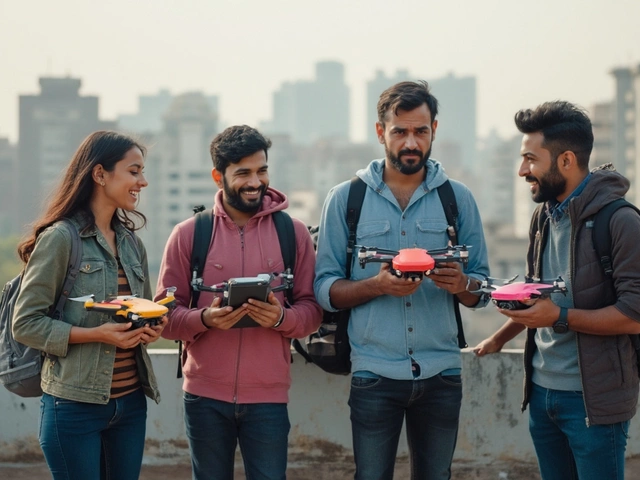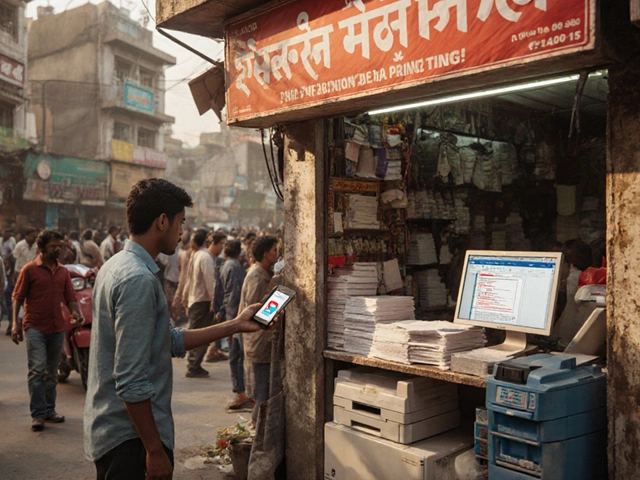Ever wondered if the police could pinpoint your DJI drone while you’re shooting the skyline over Marine Drive? In India’s rapidly expanding drone scene, the answer isn’t a simple yes or no. It depends on the technology baked into your quadcopter, the rules the DGCA enforces, and the tools law‑enforcement agencies actually have in their kit. This guide breaks down every angle - from the data your DJI stores to the real‑world tactics Mumbai police use - so you can fly smarter and protect your privacy.
What Data Does a DJI Drone Carry?
DJI drones are equipped with a suite of telemetry sensors that continuously log GPS coordinates, altitude, speed, and flight time. The information lands in the on‑board flight log, which can be synced to the DJI FlySafe portal or the DJI GO app. In addition, most modern DJI models embed a unique serial number and a UAV ID that ties every log entry to a specific device.
When you connect your drone to a mobile device, the app also records Wi‑Fi SSID, Bluetooth MAC addresses, and, if enabled, the Remote ID broadcast signal that constantly transmits the aircraft’s ID and position over the 5.8GHz band. This broadcast is designed for air‑traffic safety, but it also creates a live fingerprint that ground stations or handheld receivers can capture.
India’s Legal Landscape for Drone Tracking
The Director General of Civil Aviation (DGCA) regulates all civil UAV operations in India under the Drone Rules 2021. Key provisions that affect tracking are:
- Mandatory registration: Every DJI drone above 250g must be registered on the Digital Sky platform, linking the aircraft’s serial number to the pilot’s AAI‑issued UIDs.
- Geofencing zones: The DGCA defines “No‑Fly” and “Restricted” zones. DJI’s Geofencing Database automatically prevents flight or forces a return‑to‑home when a drone enters these areas.
- Remote ID requirement: From December 2024, all drones operating in Indian airspace must broadcast a Remote ID signal that includes the operator’s registration number.
These rules give law‑enforcement a legal hook: if an unregistered or non‑compliant drone is spotted, the authorities can request the registration details from the DGCA and, through a court order, obtain the linked flight logs from DJI’s servers.
How Police Actually Track a DJI Drone
In practice, Indian police combine several techniques. Here’s the most common stack:
- Remote ID receivers: Handheld or vehicle‑mounted scanners pick up the 5.8GHz broadcast, capturing the drone’s unique ID and real‑time GPS.
- Cellular network triangulation: If the pilot’s mobile device is tethered to the controller, the network can narrow down the device’s location within a few dozen meters. This method works even when the Remote ID is turned off.
- Radar and acoustic sensors: Airports around Mumbai have micro‑Doppler radar that can detect low‑altitude UAVs. Some police units repurpose these radars for urban monitoring.
- Flight‑log subpoena: When an incident escalates, officers can file a request with the DGCA for the drone’s registration data, then approach DJI for the associated flight logs.
Each method has limits. Remote ID works great in open skies but can be jammed or disabled on older DJI models. Cellular triangulation requires the pilot’s phone to be active and within range. Radar picks up any metallic object but can’t identify the make or operator without cross‑referencing other data.
Real‑World Cases: Mumbai’s Experience
Last year, Mumbai Police seized a Mavic 3 DJI’s flagship camera drone that was filming a private party without a permit. Here’s how they did it:
- The officer’s handheld Remote ID scanner captured the UAV’s broadcast ID within 200m of the venue.
- Using the Digital Sky portal, they matched the ID to a registered user - a freelance videographer who had not listed the event as a permitted activity.
- They requested the DJI flight logs, which showed the drone entered the event zone at 18:42IST and hovered for 12minutes.
- The logs also recorded a Bluetooth MAC address that linked to the controller’s smartphone, confirming the operator’s identity.
This case illustrates that, when all pieces line up, police can build a forensic chain from a live signal to a court‑admissible log.
Protecting Your Privacy While Flying
If you’re a hobbyist or professional photographer, you don’t have to give up your DJI drone to stay legal. Follow these practical steps:
- Register on Digital Sky: A proper registration not only keeps you compliant but also gives you a clear audit trail if you’re ever questioned.
- Keep Remote ID on: Disabling it may look suspicious and can lead to penalties under the Drone Rules 2021.
- Use an offline flight plan: When you don’t need live streaming, keep the controller’s mobile data off to reduce cellular triangulation risk.
- Encrypt your logs: DJI’s app now offers a “Private Log” option that encrypts flight data before uploading. This adds a layer of protection against unauthorized subpoenas.
- Stay out of restricted zones: The DJI Geofencing Database updates automatically, but double‑check the DGCA’s online map for temporary No‑Fly zones, especially during large events.
Remember, the best privacy strategy is to stay within the law. Illegal flights not only attract police attention but could also lead to hefty fines and seizure of equipment.
Comparison of Common Tracking Techniques
| Method | Data Captured | Range | Reliability in Urban Mumbai |
|---|---|---|---|
| Remote ID broadcast | UAV ID, GPS, registration number | Up to 500m (line‑of‑sight) | High - works on all DJI models post‑2024 |
| Cellular triangulation | Phone IMSI, approximate GPS | City‑wide (tower coverage) | Medium - depends on phone being on |
| Radar/Acoustic sensor | UAV’s radar cross‑section, sound fingerprint | Up to 2km | Low - cluttered skyline reduces accuracy |
| Flight‑log subpoena | Full telemetry, timestamps, controller MAC | Post‑event (requires legal request) | Very High - forensic proof if obtained |
Bottom Line
Yes, police can track DJI drones in India, but they need either a live signal (Remote ID or cellular data) or a legal route to the flight logs. By registering your aircraft, keeping Remote ID active, and respecting restricted zones, you make it far less likely that a routine patrol will turn into a forensic investigation. Stay informed, fly responsibly, and enjoy the aerial views without unnecessary worry.
Frequently Asked Questions
Can police access my DJI flight logs without a court order?
No. In India, flight logs are considered private data. Police must obtain a court order or a DGCA directive before DJI can release them.
What is Remote ID and why does it matter?
Remote ID is a mandatory broadcast that transmits a drone’s unique identifier and GPS coordinates. It lets air‑traffic controllers and law‑enforcement pinpoint UAVs in real time, fulfilling safety and accountability rules.
If I turn off the DJI app, can police still track my drone?
Turning off the app stops live streaming, but the drone still emits Remote ID (if enabled) and may still be linked to the controller’s phone via Bluetooth. So police could still identify it.
Are older DJI models like the Phantom 4 trackable?
Older models lack built‑in Remote ID, but they still record GPS in flight logs. Police would need to obtain those logs through a legal request, or use radar/acoustic methods for real‑time detection.
How can I hide my DJI’s identity during a hobby flight?
Legally, you cannot disable Remote ID after December 2024. The safest approach is to fly in unrestricted zones, keep your registration up to date, and avoid using the mobile data connection on the controller.




